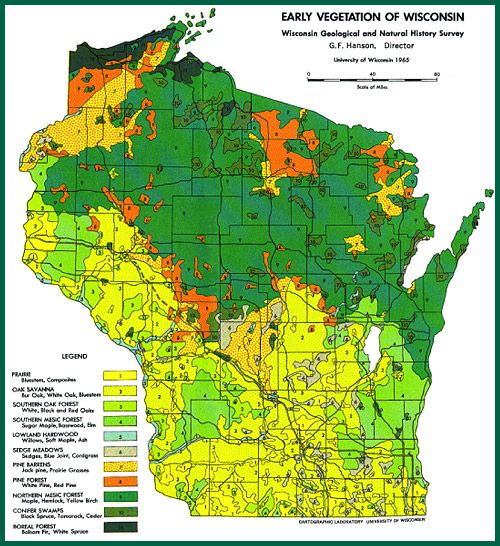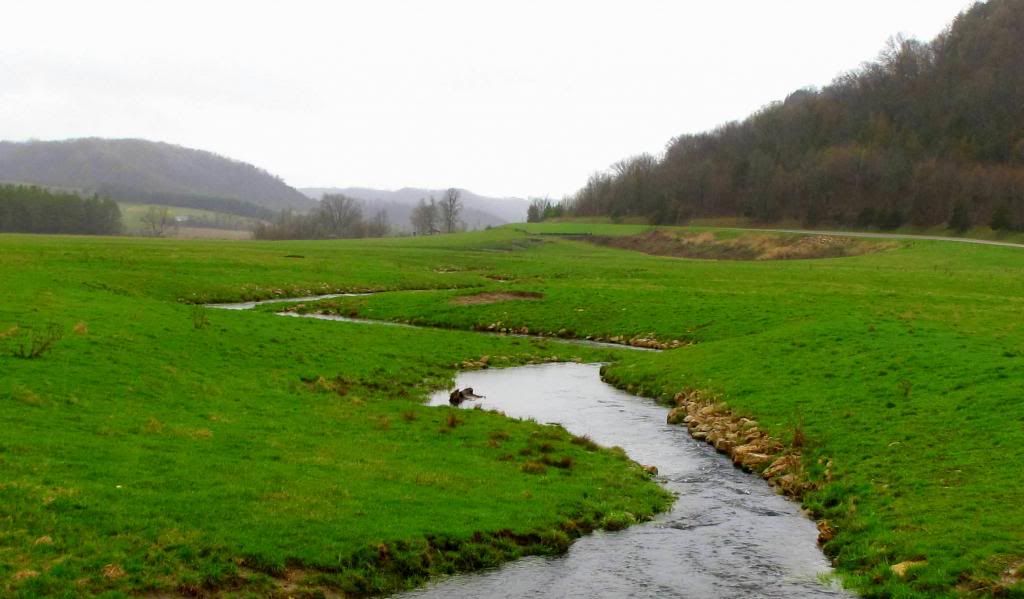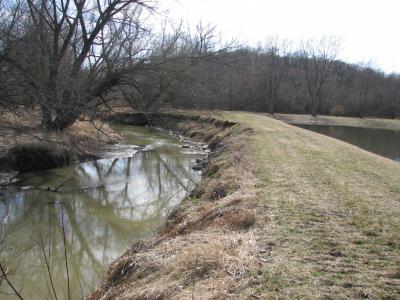I see this happen every time a new easement is purchased. I hear from people in the know that it is done to stabilize the banks and to encourage invertebrate growth.
I also hear that it is a “Restoration” effort to make the streams like they were before human ruined it. The rolling prairies as depicted in the below map is the “ONE” areas.

Anyone that fishes the Wisconsin Driftless Area knows that the “Heart” of the driftless area centers around CRAWFORD,RICHLAND and VERNON counties.
Unless you are color blind and can’t count past the number ONE it is obvious that the BEST counties on the map to fish were category THREE and FOUR before man messed them up.
Categories:
One: Rolling Prairie
Two: Oak Savannah Bur Oak and White Oak
Three: Southern Oak Forest White, Black and Red Oak
Four: Southern Mesic Forest Sugar Maple, Basswood and Elm
Almost all of Richland County and Vernon County were Southern Mesic Forest with Sugar Maple, Basswood and Elm.
Crawford County has the same Southern Mesic Forest and Southern Oak Forest with a little Oak Savannah splashed in.
Please quit making my streams in to Rolling Prairies devoid of trees. The fishing is NOT better after it is done and the premise for doing the “improvement” or “restoration” is flawed.
The streams look terrible after the clear cutting and manicuring of the streams.

If you need a place to spend your money on, please focus on easement purchases and not scaring the streams.
 Can I see your proof. You should investigate the shocking data from before a restoration to the shocking data after a restoration before you make your conclusion. Also, root wads from trees next to the bank is one of the causes of bank erosion. Where did you get your cold water fisheries degree from. I would rather be able to fish a stream with restoration in twenty years instead of streams filled in with sediment. Restoration helps prevent sedimentation by establishing stream sinuosity and making them self scouring. I sure hope you are not supporting the do nothing philosophy onto your young students so that there is not good trout fishing for their kids when the grow up. Luckily you are not in a position to control this issue.
Can I see your proof. You should investigate the shocking data from before a restoration to the shocking data after a restoration before you make your conclusion. Also, root wads from trees next to the bank is one of the causes of bank erosion. Where did you get your cold water fisheries degree from. I would rather be able to fish a stream with restoration in twenty years instead of streams filled in with sediment. Restoration helps prevent sedimentation by establishing stream sinuosity and making them self scouring. I sure hope you are not supporting the do nothing philosophy onto your young students so that there is not good trout fishing for their kids when the grow up. Luckily you are not in a position to control this issue. 



